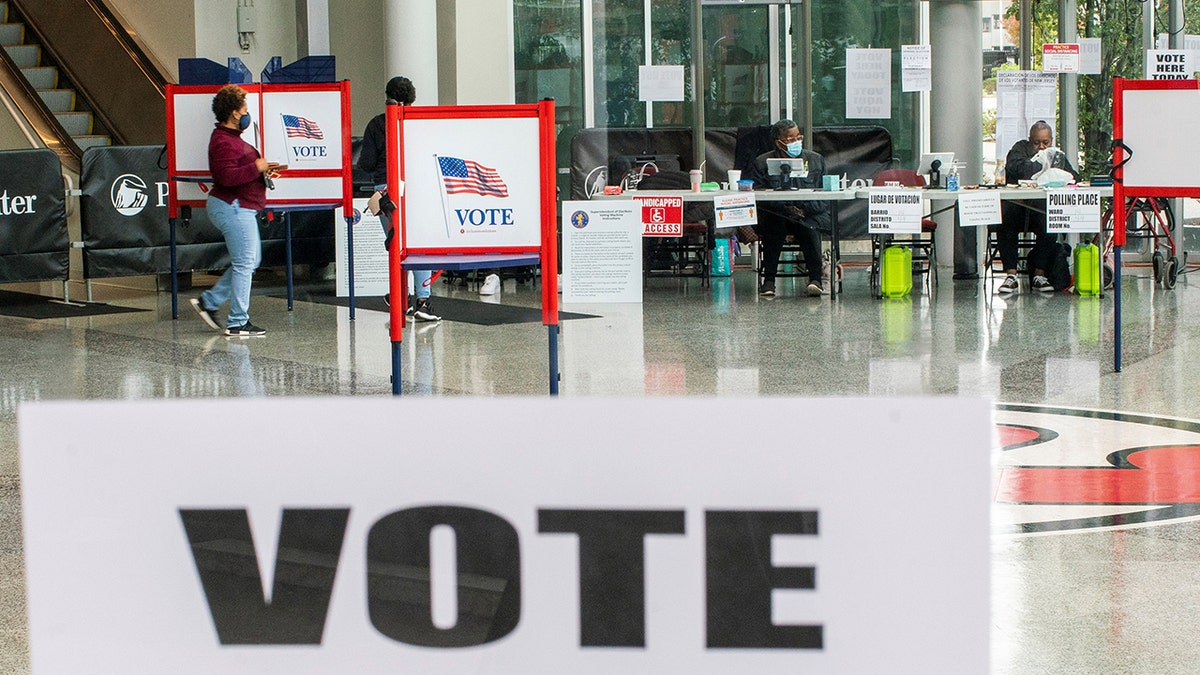Fox News Flash top headlines for September 29
Fox News Flash top headlines are here. Check out what's clicking on Foxnews.com.
Nebraska and Washington, D.C., began early voting on Monday. Here is the information you need to register and vote in both.
Nebraska’s 2nd District could be critical on the path to 270
Nebraska is red territory. Former President Trump won the state by 19 points in the last presidential election and 25 points in 2016.
But the state has long allocated its electoral votes differently than most other states, and that could give Harris an opportunity.
The scenario goes like this: Vice President Harris wins Michigan, Pennsylvania and Wisconsin and the less competitive states that President Biden won in 2020 (i.e. excluding Arizona, Georgia, Nevada and North Carolina).
That gives her 269 electoral votes, resulting in a tie that would, in the end, very likely hand Trump the election.
To win with the majority of the Electoral College, either Harris or Trump needs 270 votes.
Nebraska’s 2nd District would provide that one extra vote.
(Maine and Nebraska are the only states that award electoral college votes both to the winner of the statewide vote, and the winner of the same vote but separated by congressional district.)
The district has voted for two Democrats and two Republicans in the last four elections:
- In 2020, Biden won with 51.95% to Trump’s 45.45%.
- In 2016, Trump won with 47.16% to Clinton’s 44.92%.
- In 2012, Romney won with 52.85% to Obama’s 45.70%.
- In 2008, Obama won with 49.97% to McCain’s 48.75%.
Omaha and its suburbs make up a significant part of the district’s population, and the city has a disproportionately high percentage of people with a college education. That gives Harris the edge. Nebraska’s 2nd District is ranked Lean D on the Fox News Power Rankings.
Nebraska’s 2nd District is also, of course, home to a U.S. House race. Center-right Republican Rep. Don Bacon has held the seat since 2017, but as last week’s Power Rankings revealed, he is locked in a close battle with second-time rival and Democratic state Sen. Tony Vargas. The district is ranked a Toss Up.
Finally, Nebraskans will also vote in two U.S. Senate races this year. The one to watch is the regular election between incumbent Republican Sen. Deb Fischer, who has won the seat twice beginning in 2012, and independent challenger Dan Osborn, a Navy veteran and local union leader. Fischer has a clear advantage, but the race moved to Likely R last week.
How to vote in Nebraska
This is a guide to registration and early voting. For comprehensive and up-to-date information on voter eligibility, processes and deadlines, please go to Vote.gov and the election website for Nebraska.
Voting by mail
Nebraska began absentee voting on Monday. Applicants do not need to provide an excuse to receive a ballot. The state must receive a ballot application by Oct. 25, and that ballot must be delivered to state officials by Nov. 5.
Early in-person voting
Nebraska will begin early in-person voting on Oct. 7, and it will run through Nov. 4.
Voter registration
Nebraska residents can register to vote online or by mail through Oct. 18. They can register in-person through Oct. 25.

Voters can head to the polls early by mail or in-person in most of the U.S. (Reuters/Eduardo Munoz)
How to vote in Washington, D.C.
This is a guide to registration and early voting. For comprehensive and up-to-date information on voter eligibility, processes and deadlines, please go to Vote.gov and the election website for Washington, D.C.
Voting by mail
Washington, D.C., began absentee voting on Monday. Registered voters do not need to apply for a ballot, as the district will begin sending ballots to all active registered voters this week. Ballots can be returned by mail or in person through Election Day.
Early in-person voting
Washington, D.C., will begin early in-person voting on Oct. 28, and it will run through Nov. 3.
Voter registration
Residents of the nation's capital can register to vote online or by mail through Oct. 15. They can also register in-person during early voting (Oct. 28-Nov. 3) and on Election Day.






